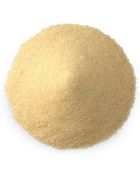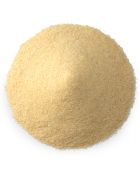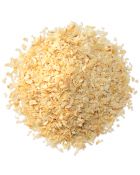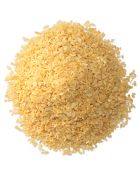Spices Market Report - November 2021
US ONION
The 2021 harvest was completed by the end of October. Early estimates put total production ~12-18% below planned thresholds. This was driven by a combination of events in different growing areas at different times, making it difficult to predict.
It started with a sharp reduction in Tule Lake planting in Q1 2021 from reduced water availability due to drought and higher grower prices. ~40-50% of the total crop reduction came from the Tule Lake region, which is also the main source of natural extra low bacteria feedstock.
The second major cause of crop reduction was widespread Fusarium basal rot in the westside of the San Joaquin Valley (California), which caused the onion to decay resulting in lower field yields, lower plant recoveries and higher micro levels. Finally, excessively strong winds coupled with poor/limited water availability/ water management challenges in the Oregon region, damaged the conventional crop in the early stages of development, reducing field yields significantly.
Planting for the 2022 crop has been completed in all regions except Tule Lake, Northern CA, Oregon and Washington– where sowing will commence towards the end of Q1 2022. Overall planted acreage is still being ascertained but preliminary indications point to a slightly reduced crop compared to the previous year (2021). Overall availability is however likely to be adequate to meet core demand. A better picture will emerge by end of Q1 2022.


Planting on the Westside
EGYPT ONION
Yellow Onion: In light of the weak summer onion prices, planted acreage for the 2021-22 winter yellow onion crop is likely to be down ~20-25% relative to the previous year. Meanwhile, input and labor costs are up sharply over last year by ~40%. Overall production in the winter crop is therefore likely to be down 15-20% and prices will be higher than current levels.
White Onion: CY22 summer white onion acreage is currently expected to be similar to last year. Planting is progressing well and will be completed in November 2021. Harvest will start towards the end of April 22.


Field in Owaynat growing location
OTHER ORIGINS (India, Europe, China)
India: The market continues to see reduced availability and firm pricing both in origin as well as in destination over the last quarter. Exports for 2021 are expected to be similar to 2020.
Firmer market pricing has improved farmer sentiment regarding CY22 planting. While it is too early to forecast acreage, a normal crop is likely in 2022.
China: CY21 prices have remained in sync with India and firm demand is likely to cause significant depletion of inventories by the end of the season. CY21-22 crop estimates are still being ascertained and a larger crop is expected.
FUTURE OUTLOOK
US
- Market pricing for US onion has already moved up by 30-35% over last year levels driven by the combined impact of crop shortages, grower price and labor cost increases, transportation and energy cost inflation. Dried onion prices will continue to strengthen and test higher levels till we get closer to the CY22 harvest.
- Chopped and XLB availability across all fractions are tight. Prices could see further elevation in 2021-22.
- Toasting and irradiation capacities are operating at 100%. Longer lead times along with increased price premiums can be expected.
- Transport will continue to be a challenge with on-going export shipping issues and domestic trucking impacted by reduced driver availability and the holiday season.
Egypt
- Yellow onion prices are expected to remain firm over the next couple of months, driven by the smaller winter crop and tight international supplies.
- CY22 white onion prices are expected to move
Other Origins
- Indian dried onion availability will remain tight and prices will continue to move up through Q1 2022 as inventories deplete further. Further price movement will depend on how the 2022 winter onion crop turns out and this will be known by early 2022.
- China pricing will be range bound through Chinese New Year and will respond to pricing from India.
US GARLIC
The 2021 harvest was completed in early November. Early estimates put overall industry production at just below planned thresholds.
The on-going drought and increased water restrictions will continue to impact US garlic in 2022 leading to higher costs and transportation challenges. The higher grower prices and irradiation costs for the CY22 crop will have some impact on recontract pricing later next year.
Planting for the 2022 crop is in full swing and industry acreage is estimated to be similar to levels planted in the previous season.


Garlic planting on the Westside
CHINA GARLIC
Due to the heavy rains in the main planting area, planting for CY22 was postponed 10-15 days. A clearer assessment of the planted area will be known by end of the year, but based on preliminary farmer feedback, CY22 acreage is unlikely to increase significantly over CY21 levels, despite the higher flake pricing in the market. This is due primarily to the delayed planting, weather, increases in costs and continued export challenges.
FUTURE OUTLOOK
US
- Prices are likely to move up progressively by 15-25% through the next season driven by raw material, labor, energy, and freight inflation. Early long-term coverage is recommended.
- Minced and extra low micro availability across all fractions will remain tight in the near to medium term.
China
- Market prices will continue to move up progressively through Chinese New Year (Feb 2022).
- Medium term coverage through Q2/Q3 2022 would be a good way to avoid pricing volatility in the next season.
India Spices
Chilli: Good arrivals continue across major markets with normal demand. Based on the preliminary survey for 2022, acreage is expected to increase ~25-30%, with most of the increase contributed by hybrid varieties. Sowing has been delayed by ~2-3 weeks and the first harvest is expected to begin the 2nd week of January. Arrivals will begin in February and peak from March to April.
Turmeric: Overall acreage is 10-15% higher than last year. Plant growth progress over the next month will be a key factor in determining the expected yield for the 2022 crop. Off seasonal crop arrivals across local market yards remained low with poor quality arrivals.
Cumin & Coriander: Growing regions received adequate rainfall in September which improved the outlook for the 2022 crop. Sowing is expected to start the second week of November. Preliminary surveys of growers indicate a potential acreage switch to alternate profitable crops but will see a clear estimate by end of November.
Future Outlook
- Chilli: Prices are expected to soften in the short term.
- Cumin: Prices are likely to move up from current levels in the short term.
- Turmeric & Coriander: Prices are expected to remain stable in the short term.
Chiles
US - Paprika/Red Chiles: The US harvest is progressing well. Dry winter weather and a delayed first freeze have allowed the pods to reach full maturity. Harvest will be completed by end of 2021 and is expected to produce a normal crop. The Mexican harvest is in progress with volume less than expected due to intermittent rain and hailstorms during harvesting and a lack of water during planting season.
US Green Chiles/Jalapeno Successful completion of the harvest/packing season for 2021. Favorable weather and improved yields helped meet the production goals despite severe labor shortages for harvesting.
China - Paprika: Harvest of new crop is in progress with ~10% lower yields than expected due to intermittent rains during harvesting. Oleoresin companies are buying higher quantities and increasing domestic demand. Nationwide electricity limitations are affecting the availability of dried and processed products.
Peru: Volume estimates are 30% lower than expected due to yield loss and fewer farmers planting. This has led to higher prices along with farming inputs increasing more than 100%.
Future Outlook
- Paprika and low heat chilies will see an increase in price and tight supply for 2022, due to short supply and tight availability of raw materials from key origins.
- Green chile processing completed and with visibility to inventory now would be a good time to cover for the annual requirements.
- Organic paprika market will continue to be very tight over the next 12 months due to restricted crop availability.
Vietnam Spices
Pepper: The 2021 crop was ~8% lower than the 2020 crop. This was due to reduced acreages in Vietnam & Indonesian white pepper growing regions, and lower yields in Indonesian black pepper growing regions. The lower crop led to a price increase of over 60% versus last year. This price increase brought much needed relief for farmers. However, competing crops are seeing record highs in recent years as well, so acreage movement into pepper is unlikely. Farmers have finished their preparations for the next crop. They are experiencing higher than usual rains but have no major report of crop damage.
Future Outlook
- Expect the 2022 crop to be similar to the 2021 crop if weather conditions remain stable over the next couple of months.
- Exports came in strong despite steep price increases and transportation challenges. Expect this to continue into 1H 2022.




